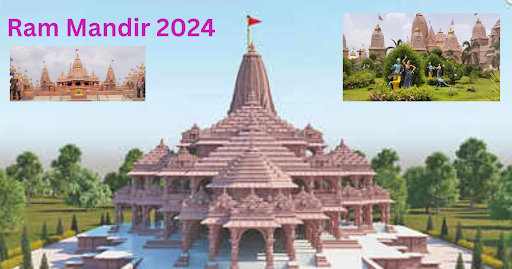The Ram Mandir Ayodhya: A Symbolic Journey of Faith and Identity
1.Introduction
significant milestone with great religious, cultural, and historical significance in India's rich history is the building of the Ram Mandir Ayodhya. The path to the temple's construction, which spanned several decades, was paved with court cases, social discussions, and tense times within the community. We will examine the history of the Ram Mandir controversy, the legal rulings that made it possible to build the temple, and the wider ramifications for Indian society in this piece.
2.Historical Context:
Ram mandir Ayodhya Located on the banks of the Sarayu River, Ayodhya is highly regarded in Hinduism as the birthplace of Lord Rama, a pivotal character in the epic Ramayana. The disputed location in Ayodhya was the site of the 16th-century construction of the Babri Masjid by Mughal emperor Babur. But in the 20th century, there was a dispute over allegations that the mosque was built on the remains of an old Hindu temple.
3.Legal Battles:
●Ram mandir Ayodhya controversy became a more acrimonious legal battle in the 20th century, with several court proceedings trying to settle it. The contested land was partitioned into three parts by the Allahabad High Court in 2010, with one-third going to the Sunni Waqf Board, one-third to the Nirmohi Akhara, and one-third to the deity Ram Lalla Virajman. This decision was historic.
●The ongoing legal battle resulted in the landmark decision rendered by the Supreme Court in November 2019. The Ram Mandir Ayodhya be built because the Hindus were awarded the entire contested land by the highest court. The ruling stressed how crucial it is to preserve social cohesion and guarantee justice for all parties.
4.Construction and Symbolism:
●Prime Minister Narendra Modi laid the foundation stone for the Ram Mandir Ayodhya on August 5, 2020, during the groundbreaking event. The temple's design reflects the rich cultural legacy linked with Lord Rama by incorporating architectural elements influenced by ancient Indian customs.
●For millions of Hindus, the building of the Ram Mandir Ayodhya more than just a physical undertaking—it is a communal declaration of faith. The temple is intended to serve as a symbol of unification within the country, bridging religious divides and promoting a feeling of common cultural identity.
5.Societal Impact:
The Ram Mandir Ayodhya controversy has permanently altered India's social structure. There have occasionally been moments of communal tension as a result of the protracted disagreement straining relations between the communities. But the building of the Ram Mandir also offers a chance for healing and peacemaking. By inviting members of other faith communities to the groundbreaking ceremony, the authorities demonstrated their commitment to unity in diversity through their inclusive attitude.wourldnews9.blogspot.com Ram Mandir Ayodhya
6.International Response:
Outside of India, interest in the Ram Mandir Ayodhya building has grown. Some foreign observers see it as a domestic issue, while others stress the need of religious communication and tolerance. The world community is intently observing how India's cultural and social landscape is shaped by this historic transformation.
7.Conclusion:
The Ram Mandir Ayodhya is proof of India's capacity to use the judicial system to resolve difficult religious and cultural conflicts. As the temple takes shape, it transforms into a dynamic representation of fortitude, harmony, and the enduring force of faith. Even though the process of building it has been difficult, it is hoped that when it is finished, the temple will stand as a symbol of peace and respect for all people, giving everyone in this lively and diverse country a sense of unity and belonging.




Comments
Post a Comment